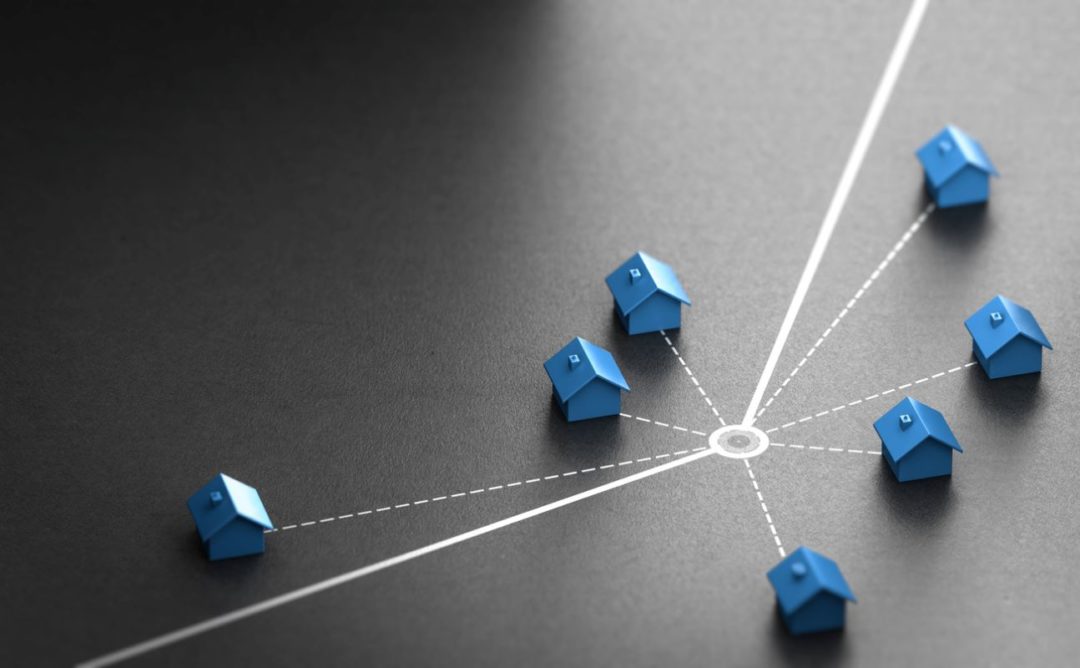
Final- or last-mile delivery is an area that larger service providers haven’t been able to serve efficiently, leaving room for players that function differently than the typical less-than-truckload or full-truckload carrier.
To meet modern customer demands, including same-day delivery and real-time visibility, specialized companies within the last-mile space are needed to provide data such as the driver and vehicle delivering a package, the driver’s ETA, and delivery confirmation.
E-commerce sales increased from $763 billion in 2020 to $870 billion in 2021. They were accelerated by the global pandemic and consumers’ expectations of faster delivery times, creating an even greater need for last-mile delivery systems that can avoid delays and bottlenecks. Logistics providers are struggling to handle these increasing volumes, leading to slower delivery times, inflexible time slots and costlier deliveries.
All of these challenges put immense pressure on the final-mile delivery.
The last mile accounts for 35% to 50% of the total delivery cost across all modes of transportation. It’s the first place where logistics service providers want to implement smart and efficient technologies that refine route planning, enhance last-mile execution and support, improve reliability, reduce waste, deliver better customer experiences, and increase the overall competitiveness of the logistics ecosystem.
Both incumbent and new market players must embrace revolutionary solutions to prepare for the future of last-mile delivery.
The State of the Industry
Despite being a fast-maturing component of the transportation and logistics space, last-mile is still inefficient, and the most expensive link in the fulfillment chain. In fact, no single segment of the supply chain experienced more challenges during the COVID-19 pandemic.
As online retail sales and package shipments rose in tandem, retailers, carriers and their customers faced even more challenges and higher costs. In 2020 and 2021, carriers added drivers to increase delivery capacity and match rising e-commerce volumes — at the expense of efficiency, visibility and control over external resources.
As the last-mile sector grows, solutions like expansive networks of crowdsourced drivers are becoming available to deliver packages for businesses and everyday consumers. Additional innovations include in-app navigation for efficient routing, tracking and managing deliveries. These technologies make for a progressive future.
The Future of Last Mile
A Research, Analysts, and Insights report predicts that by 2028, the global last-mile delivery market will increase to more than $268 billion. At the heart of it are innovations such as:
- Automated logistics company distribution centers with autonomous, self-learning applications;
- Availability of more specialized delivery and transport skills;
- Ability to recruit and retain properly trained drivers to deliver specialized shipments, and
- Alternative delivery methods with shorter delivery times, such as drones and droids with machine-learning software, driverless technology, camera-based object tracking, automated loading and advanced analytics.
An electrical wholesaler is a perfect example to showcase the progress and importance of the last-mile delivery service. Initially, the company intended to have its drivers decide the best routes to take. However, with the goal of outperforming customers’ expectations, it decided to eliminate its dated processes.
The wholesaler embedded an on-demand delivery platform into its network, integrating it with handheld scanners, which were used to scan inventory and track proof of delivery (POD). In the process, it was able to:
- Eliminate manual tasks;
- Achieve end-to-end tracking through real-time status visibility;
- Expedite order entry with full visibility into customers’ orders without changing their processes;
- Improve internal processes through proof of delivery;
- Optimize routes for its drivers to save time, ensure timely delivery and get more deliveries done, and
- Create transparency internally with staff and externally with customers.
The last mile involves many stakeholders, making it a complex and difficult area to tackle. Logistics companies don’t need to manage a fleet. They can integrate on-demand delivery software into their e-commerce environment, enterprise resource planning system or other tools to facilitate and automate last-mile delivery.
Getting it right requires innovation, speed and building up capabilities to enable the use of real-time visibility and routing through increased partnerships with on-demand delivery technologies.
Ryan Hanson is president and co-founder of Dispatch, a B2B last-mile delivery platform.







